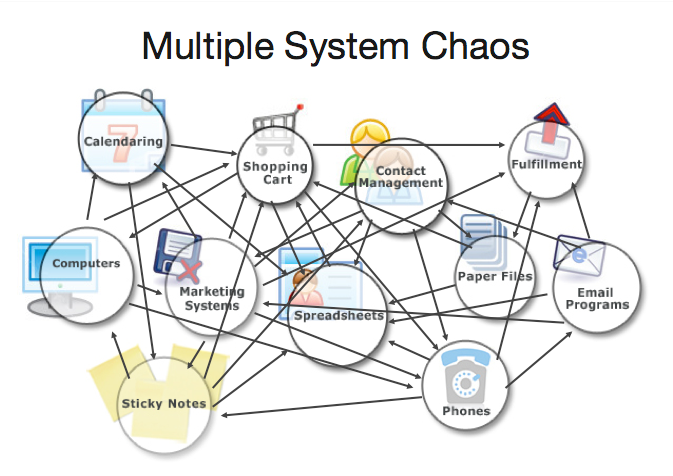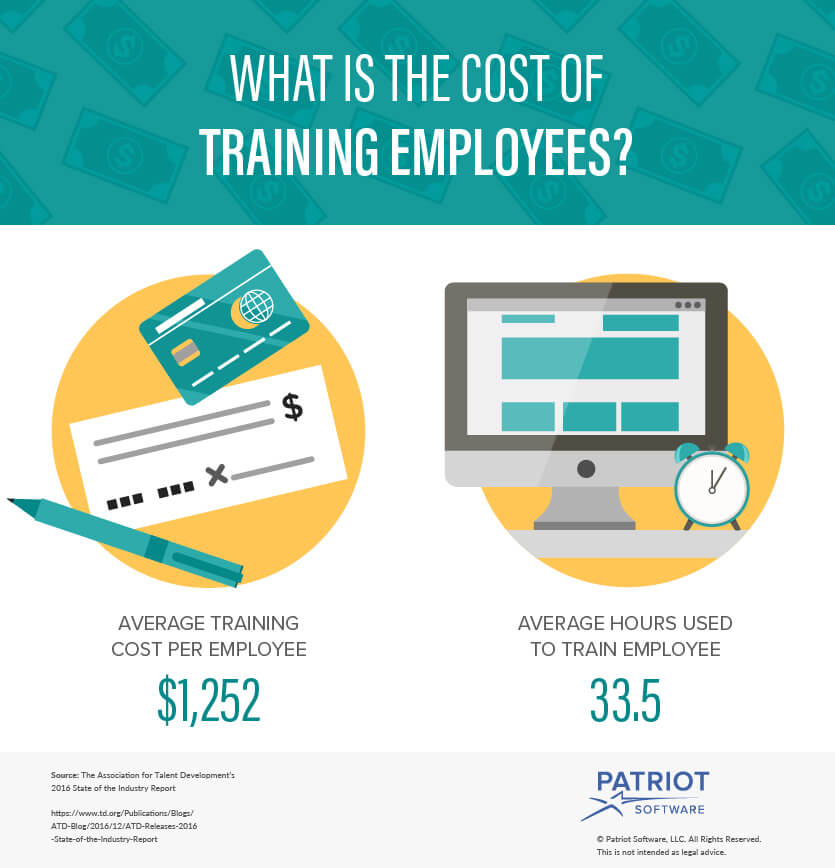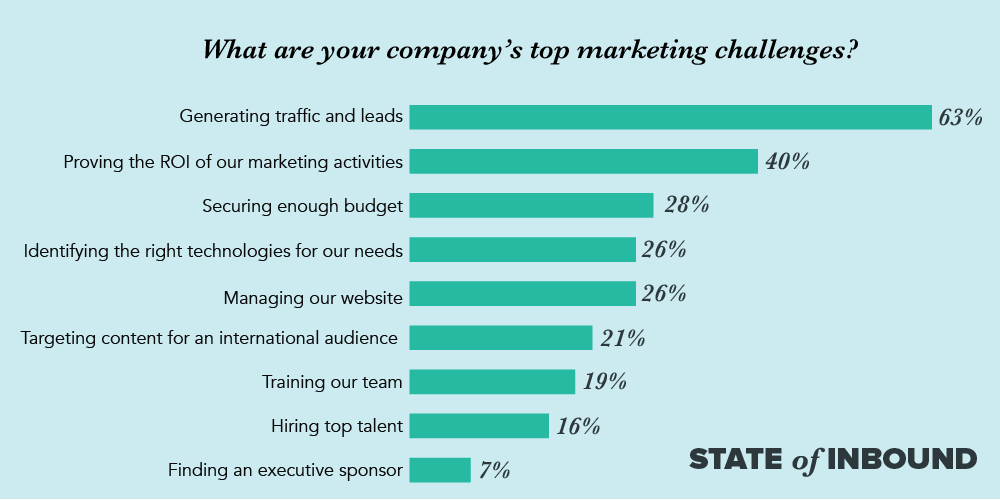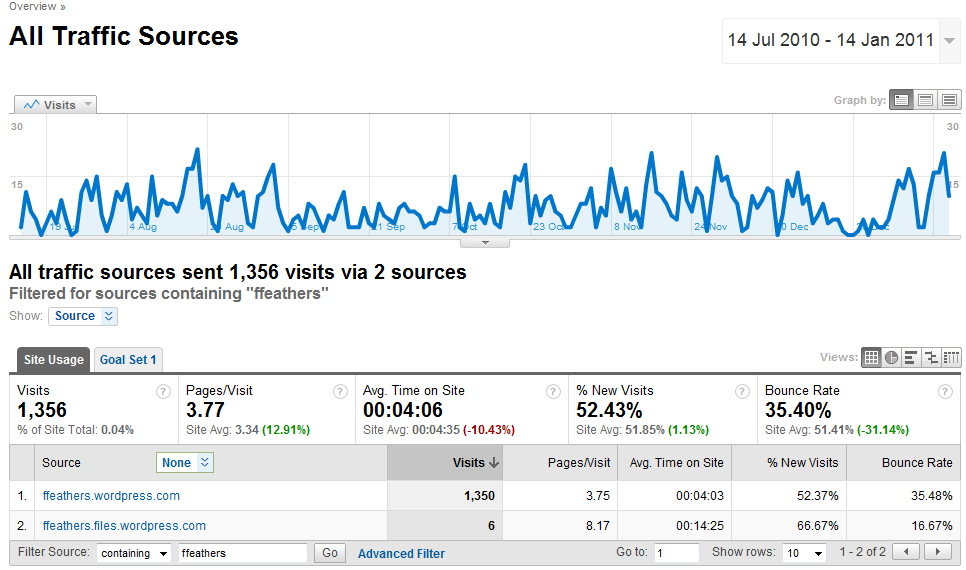If you’re like 51 percent of today’s marketers, then you have an automation system in place at your agency. You also use customer relationship management (CRM) software, which SuperOffice calls “the biggest software market in the world.”
As you spend your days bouncing back and forth between your marketing automation tool and your CRM software, you can’t help but think there has to be a better way. You know you’re wasting valuable time, but you can’t omit either system from your workflow. What are you supposed to do?
Instead of using two separate pieces of software for your CRM and your marketing automation needs, why not integrate them into one? Doing so can be incredibly beneficial for your productivity as well as the profitability of your office.
Here’s how.
1. Saved Time and Money
The top reason we recommend integrating your CRM and marketing automation is saving time and money.
Everyone likes to save money. That’s just a fact. While sure, in this case it’s the company’s money and not what’s in your wallet, reigning in spending is still important for any business. Slipping into the red can spell company failure, especially for small businesses and startups trying to get a leg up.
Now, you will have to shell out more cash for the initial cost of integrating the two systems. After that, though, the money savings will quickly become apparent month after month and year after year.
Instead of paying monthly fees for two separate pieces of software, you’re only charged for one. That’s automatically more money your company has in its respective, figurative pocket. Given that CRM software can cost anywhere from $50 to several hundred dollars monthly, the savings can be significant.
Then there’s the cost of marketing automation. This is often much more expensive than CRM software and may cost upwards of $1,000. Can you see now why it’s worth integrating the two types of software?
Another area in which you can save with CRM and marketing automation integration is time. You know what they say, time is money. Now you’ll have more of both. Rather than spending your day logging into one system and then another, you can streamline your workflow. With a single system to use, you can be a hard-working marketing machine.
As productivity in the office increases, so too does ROI.
2. Ease of Use
There’s a term out there called multiple system chaos. What does it mean? It refers to the tangled web that is using multiple systems for all your job duties. Take a look at this graphic to see what we mean.
You know that using multiple systems for your company is not time-efficient. It’s also expensive. Worst yet is that sometimes certain duties can fall through the cracks. It’s not that you intended to ignore that lead follow-up you were supposed to do, but with so many systems, it’s easy to get bogged down and overwhelmed. You’re only human, and sometimes you forget responsibilities.
Having a single CRM and marketing automation tool will simplify your working life as well as the lives of your employees. Now you can do tasks like data syncing, data mapping, contacts management, lead nurturing (more on that later), email marketing, and so much more all on a single system.
Since you’re using marketing automation, a lot of these tasks can be done using the software. That makes a single system far easier to use than what you were doing before.
3. Less Overhead on Employee Training
Turnover is a naturally-occurring phenomenon in any office environment. Some employees find better opportunities, others retire, and the cycle continues.
When new employees come into the fold, how much effort and cash will it take for you to train them? According to data from payroll service Patriot Software, you’ll spend 33.5 hours on a training regimen for each employee. It will also cost you $1,252.
That’s by no means cheap, especially for startups and small businesses. You’re then compounding the problem by using separate CRM and marketing automation software. Not only do you have to pay more to add an extra user account to each software, but you then have to sit down and instruct the employee on how to use both systems.
That can easily tack on both time and money to the above figures. We’d say you’re probably doubling the training times and costs. You were already spending more than a day training a new employee according to the above data. Can your office afford for you to spend three or four days on training? What about all the money it will take?
An integrated system is the way to go in this case. The onboarded employee will have but a single system to learn and understand. That can shorten the training period to a more reasonable length. Also, since you’re only paying for one user account for this employee, your company is pocketing more money.
4. Improved Lead Generation and Nurturing
In a 2018 HubSpot report, the majority of marketers (63 percent) said they had the most trouble with lead generation. Yet, in that same report, marketers listed lead nurturing and lead gen as two of their three biggest organizational objectives.
If you too are struggling to bring in qualified leads (those who are more ready to buy), then it’s time to look at the software and tools you’re using.
As we mentioned, running separate CRM and marketing automation software leaves things to fall through the cracks. This is never intentional, but if it’s your leads that get left behind, it can be detrimental to your company’s success and bottom line.
Sometimes the opposite happens. CRM by its very nature is focused on your leads and customers. If you use your CRM software to initiate contact with a lead, then someone else does the same with marketing automation, that’s also detrimental. You’re going to confuse and annoy the lead by sending them the same message twice from two separate parties. They could jump ship to the competition.
By combining the lead-nurturing capabilities of CRM with automation, you can guide more leads through the funnel faster and more efficiently than ever before.
You’re still including the human touch with the emails and other communications you send out, of course. Now though, some of these communications are automated so you can reach the greatest number of leads possible.
Not only that, but combining the two pieces of software gives you great customer insights. You can track customer shopping behavior or see which emails customers are opening. Knowing this information allows you to write more tailored email and content to your leads and customers that should hit the mark.
5. The Unification of Your Marketing and Sales Teams
Above, we talked about how it’s possible to mistakenly send the same email twice to a lead if your CRM and marketing automation are not integrated. It’s just as possible for your sales and marketing teams to end up doing two of the same thing without knowing it.
These teams are often comprised of very busy individuals. Sometimes they miss an email or a memo and forge ahead. If the sales team winds up doing the same project the marketing team is already on, that wastes everyone’s time.
When they work in unison, your marketing and sales teams are the backbone of your company. They need one another to guide leads through the entirety of the customer journey.
After all, HubSpot found in a free downloadable report that it’s possible to earn more annual revenue when the two teams work together, as much as 20 percent more.
With an integrated CRM and automation tool, communication can be instantaneous between the two teams. Also, on a unified system, team members can often make changes in real time. This prevents anyone from doing the same task twice.
Automation clears up both the salesperson’s and the marketer’s oft-overloaded schedules. This, with improved communication from an integrated system, makes for a more productive office environment overall.
6. Fewer Support Hiccups
Using multiple pieces of software is unwieldy, pricy, and time-consuming. We’ve elaborated on all those points already.
It’s also a pain when it comes time to contact support.
If one software malfunctions or fails (which is practically inevitable because no tech is perfect), what are you going to do? Who are you going to call?
The more software you use, the more phone numbers you have to keep track of. You could also waste hours and hours on hold.
In call handling, there’s a term called the Average Hold Time (AHT). This is how long it takes for your call to be answered after being put on hold. So how long is the standard AHT? That’s the thing: it varies.
If you spend between 10 and 20 minutes on hold every single week, guess how long that is overall? It’s 43 days!
Forty-three days is a very long time. Wouldn’t you want to do something better with your time than sit captive on the phone? Yet the more systems you have in place, the more time you’ll spend on hold when you need to get your software troubleshooted. You can double or maybe even triple that 43-day estimate!
By switching to just a single CRM and marketing automation tool, there’s only one phone number to call for technical support. That means less time spent waiting on hold and more of your own time reclaimed.
7. One Single Reporting System
We’ve talked a lot about how sales and marketing teams crossover to achieve the goals of lead gen, lead nurturing, customer retention, and higher revenue. How do you know you’re nailing each of those goals?
By tracking analytics via software reports and other data, of course.
This is where having multiple pieces of software becomes problematic. If you’re using several systems to create one overarching sales and marketing strategy, you have to think of it like a puzzle.
Each analytics report you get is a piece of the puzzle. You assemble them all together to hopefully get a comprehensive view of the success of your latest campaign.
That assembly can take hours, as you have to comb through significant amounts of data just to get to the relevant stuff. Then you’d have to take said relevant data and compile it into a single report you can then show your sales and marketing teams.
Whew, doesn’t that sound like a lot of effort? It sure does.
Not only is report analysis time-consuming, but it’s expensive, too. Business2Community mentions that, in 2016, a decent chunk of a marketer’s budget (11 percent) was being dedicated to analytics.
Why do all that hard work and spend all that money yourself when you can integrate your CRM and marketing automation? All the data you want to track will be compiled—automatically—into one easily-digestible report. Whether you care most about lead generation, content marketing, email open and click-through rates, or product sales, your analytics produce the info that is most relevant to your company.
Analytics are one area you can’t afford to ignore. The only way to know how successful your campaigns are is by tracking this reported data. Having to fetch reports across multiple software is not only annoyingly time-consuming, but it’s a good way to miss important information.
Conclusion
If you’re using customer management software, marketing automation software, and other software for your sales and marketing, you’re wasting tons of time and money. All the work of logging into one system to another, pulling analytical data, and syncing and tracking information can leave you exhausted at the end of the day. It’s no wonder considering you’re doing so much more work than is necessary.
That’s not to mention that when you onboard new employees, you have to pay for them to access all that software. Then you have to sit them down and show them how to use every last program.
There’s a better way, and that’s by integrating your CRM and marketing automation. Your office could enjoy perks like more money, less wasted time, increased productivity, a more streamlined processes, and one-stop analytics reporting.
Are you still using separate CRM and marketing automation software? Did this article inspire you to try something different? Let us know in the comments below!




